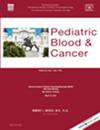Two Surveys, 16 Years Apart: Comparing Traditional and Complementary Medicine Use by Children With Cancer in Jordan
Abstract
Background
Traditional and complementary medicine (T&CM) is commonly used by children with cancer alongside conventional treatments. However, data on its use in Jordan remain limited. This study aimed to assess the current prevalence, types, motivations, and disclosure rates of T&CM use in Jordan, and to compare these findings with those from the original 2008 study conducted in the same setting.
Methods
A cross-sectional study was conducted in the pediatric oncology department at King Hussein Cancer Center between November 2023 and May 2024. A brief proxy-report T&CM questionnaire with evidence of validity and reliability was used.
Results
A total of 85 patients participated (response rate = 85%). Overall, 29.4% reported T&CM use, primarily for perceived safety (52%), managing cancer-related symptoms (44%), and potential therapeutic benefit (40%). Nutritional (68%) and psychological (24%) approaches were the most used modalities. Disclosure of T&CM use to healthcare providers was reported by 75% of users. Reasons for non-use included a lack of recommendation by healthcare providers and limited awareness. A statistically significant association was found between T&CM use and current therapy stage, with higher use among patients in active treatment. No other demographic or clinical variables were significantly associated with T&CM use.
Conclusion
Compared to earlier findings, this study shows a lower prevalence of T&CM use and a higher disclosure rate, suggesting improved communication and awareness. Parents used T&CM to complement conventional care rather than as an alternative. These findings underscore the importance of integrating discussions about T&CM into pediatric oncology care to support safe and informed use.


 求助内容:
求助内容: 应助结果提醒方式:
应助结果提醒方式:


